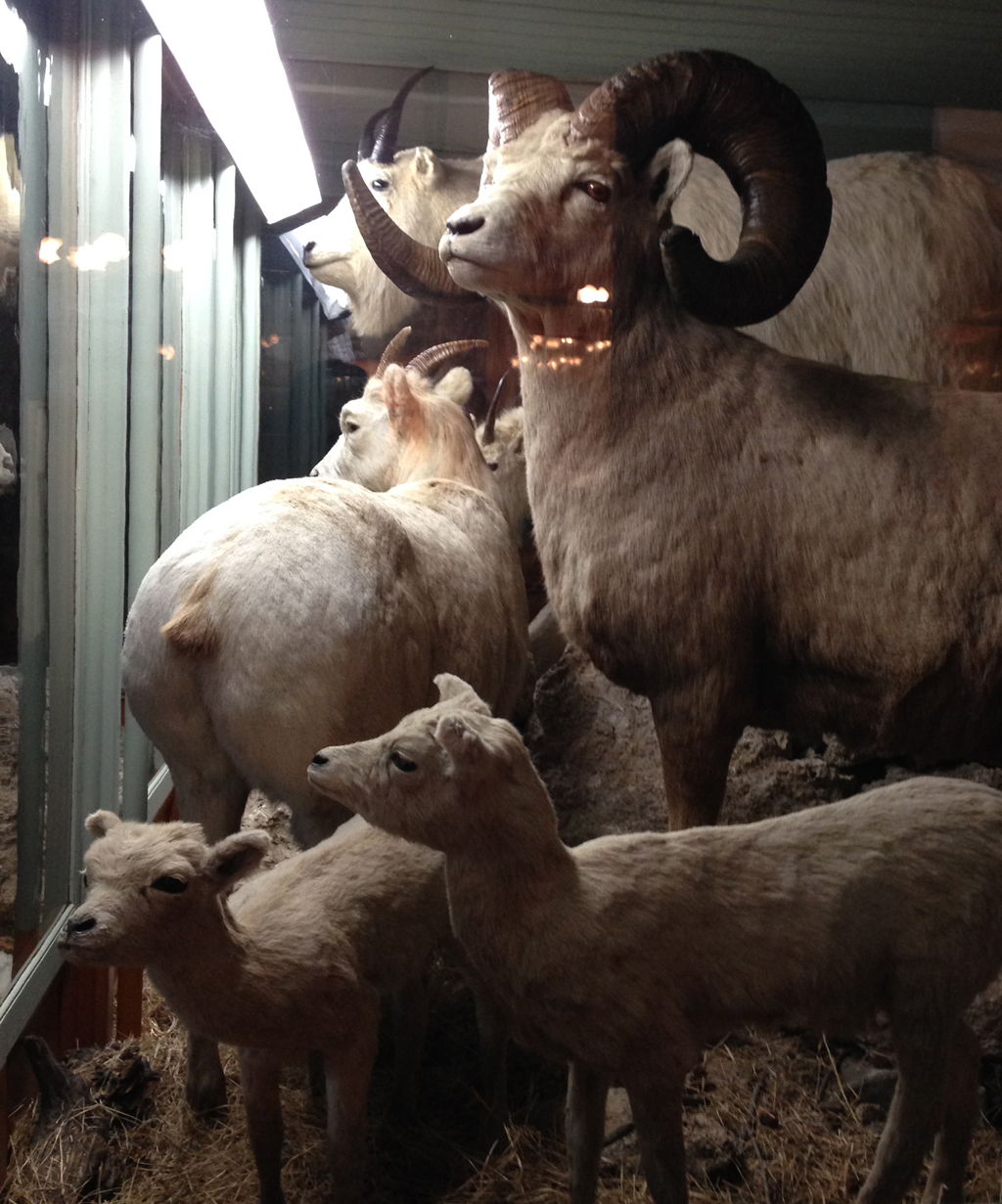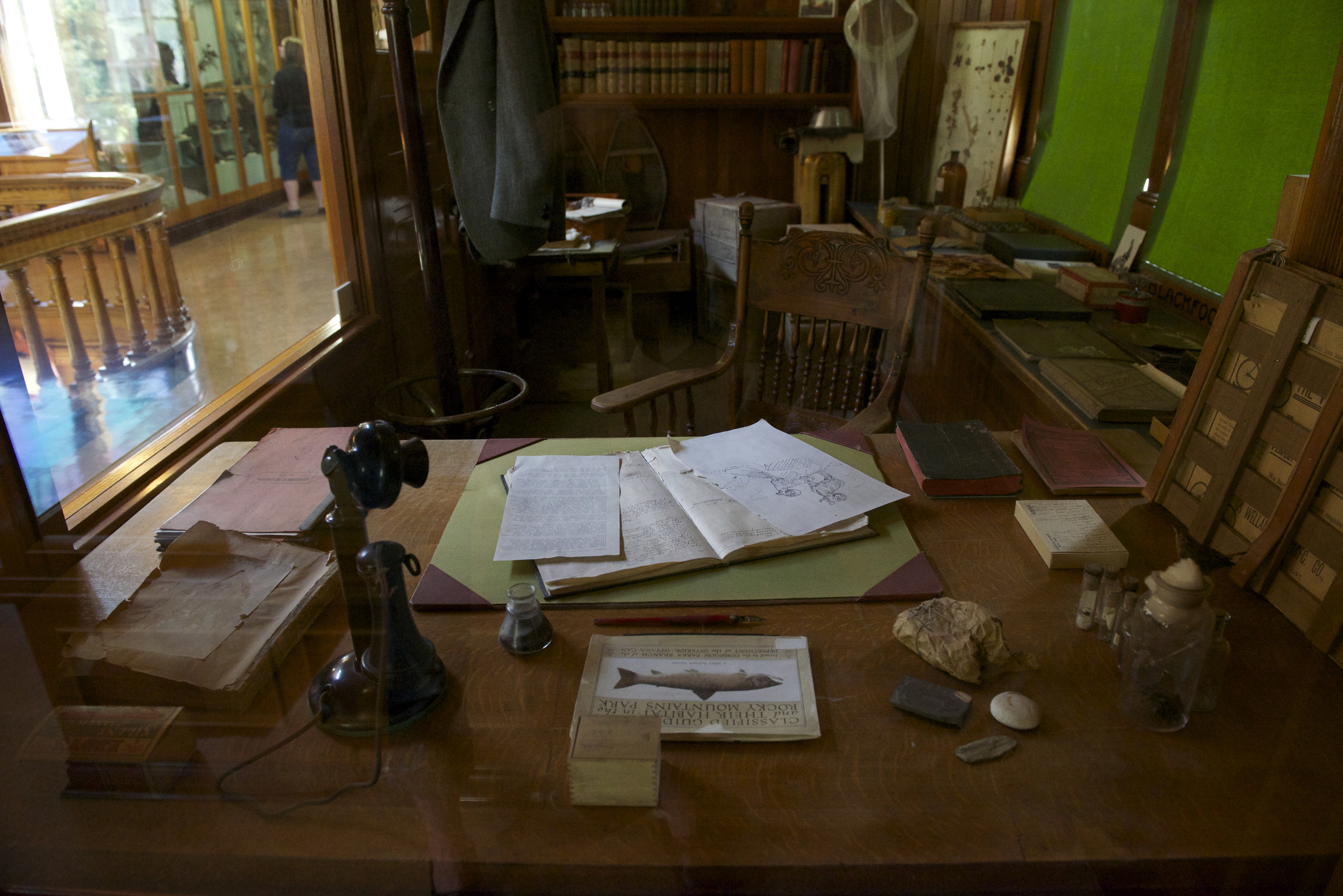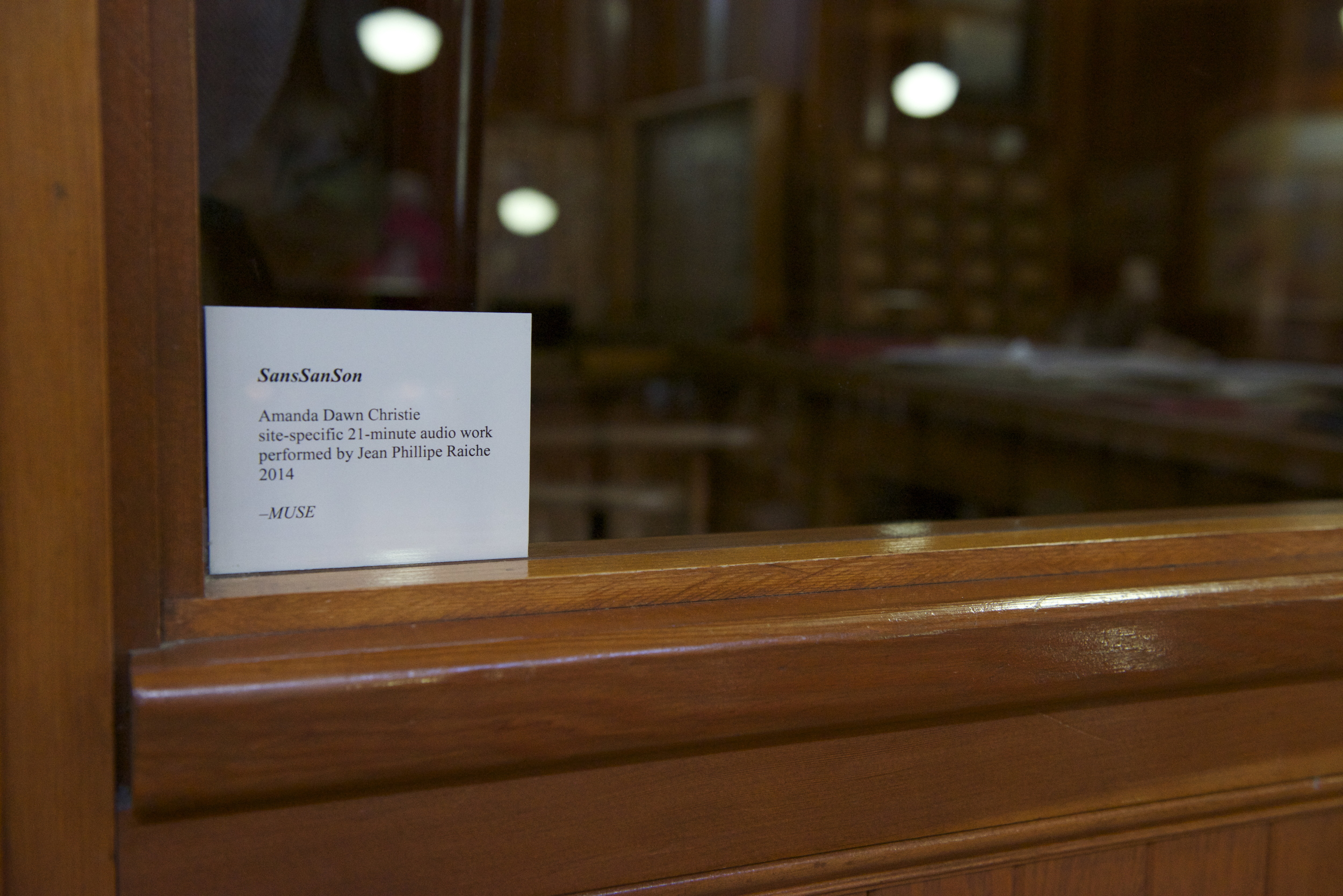SanSanSon
site-specific 21-minute audio work
exhibited as a part of MUSE: an exhibition curated by Anne Koval involving three artists and a curator from New Brunswick at the Banff Park Museum from 30th May until 30th June 2014.



recorded, edited and mixed, site-specific 21-minute audio work, performed by Jean Phillipe Raiche, 2014
This work was created specifically for an exhibition curated by Anne Koval for the Banff Park Museum:
MUSE: an exhibition involving three artists and a curator from New Brunswick at the Banff Park Museum from 30th May until 30th June 2014. This Natural History Museum was founded in the late nineteenth century and is now designated an historical site: “a museum of a museum”. This exhibition includes the work of D’Arcy Wilson, Janice Wright Cheney and Amanda Dawn Christie, curated by Anne Koval. […] In the exhibition MUSE, the artist/art mediates the experience, revealing another layer. There is an elegiac quality in the work of these artists, hauntingly prescient, in their response to the spaces of the museum.
Excerpt from the Curatorial Text by Anne Koval:
MUSE: an exhibition involving three artists and a curator from New Brunswick at the Banff Park Museum from 30th May until 30th June 2014. This Natural History Museum was founded in the late nineteenth century and is now designated an historical site: “a museum of a museum”. This exhibition includes the work of D’Arcy Wilson, Janice Wright Cheney and Amanda Dawn Christie, curated by Anne Koval.
Inside the Banff Park Museum the animals are all watching. They are transfixed, or, so it seems. This natural history museum is a strange suspension in time. Designated as ‘a museum of a museum’ this unique space and its specimens serve as inspiration for three artists and a curator. The exhibition title MUSE plays on the word as both noun and verb where the museum acts as muse for the artist, and, as a place where visitors spend time musing over its displays.
Museums are not simply repositories; they are also sites for creative endeavor.
–J. Drobnick and J. Fisher, Museopathy
As a collaboration between artists, curator and museum the space is transformed from being ‘a container of cultural artifacts to a cultural readymade, a medium for artistic analysis, commentary and reconfiguration.’ (J. Fisher). Each artist creates work that is a direct response to this collection, its history and its site; an artistic intervention. […] In the exhibition MUSE, the artist/art mediates the experience, revealing another layer. There is an elegiac quality in the work of these artists, hauntingly prescient, in their response to the spaces of the museum.
[…]
MEZZANINE OFFICE
SansSanSon
Amanda Dawn Christie, site-specific 21- minute audio work, 2014.
This audio work is an re-imagining of the sounds that the curator and collector Norman Bethune Sanson may have once made in his office during his tenure at the museum from 1896 to 1932. SansSanSon references the visible/invisible presence of Sanson as he moves about his office. Sanson was an avid collector and the samples of specimens and herbology were all classified according to Linnaean taxonomy. Christie’s audio piece documents the sounds of Sanson’s footsteps, as he is leafing through the pages of books, dipping his pen in ink, and speaking aloud the Latin names of animals as he writes. There is a strong sense of his presence as he opens and closes doors, and leaves the room. We become aware of this absence. In French sans means without, a wordplay on anson, whose trace remains, although he no longer occupies this office.
In much of Christie’s audio visual work there is a haunting quality of – what remains – the ‘momento mori’ as suggested in her representations of loss and longing. Her recent work Spectres of Shortwave, a media-based installation explores the mysterious web of international shortwave radio towers that once dominated the Tantramar Marsh in Sackville, New Brunswick. Now regarded somewhat as an obsolete technology this work also recalls the now defunct weather station that Sanson helped to design on Sulphur Mountain in Banff in 1903, the same year that the current Banff Park Museum was built. Sanson climbed the mountain to
record the weather, weekly and every fortnight as he aged. He was retired from his role as curator in 1932 and soon after his role as meteorologist became obsolete with new technology. Sanson was honoured for the one-thousand times he climbed the mountain in a sunrise celebration and the peak was named Sanson Peak in 1948, the year before his death.